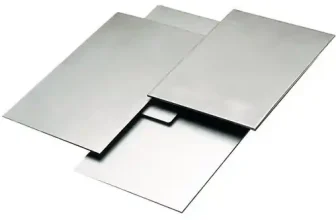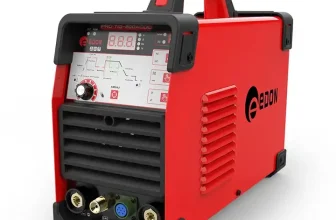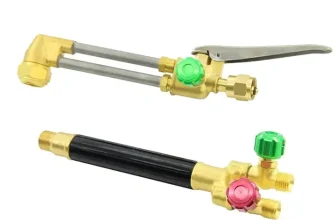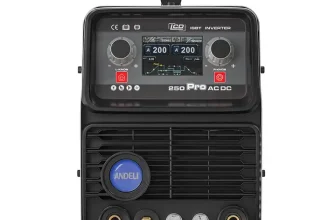A suitcase welder, as the name might suggest, is not an article of luggage designed for savvy travelers, but instead a dynamic tool used by professionals in various industries. This type of welding equipment is engineered to be compact, portable, and highly reliable. The term ‘suitcase’ primarily refers to its distinctive design—much like a suitcase, the welder is essentially self-contained in a small, durable casing, complete with a sturdy handle for easy transportation. Despite their small size, these welders come packed with many of the features found in larger, stationary machines, making them incredibly versatile for a wide array of welding tasks. In the following sections, we will delve more into the components, features, types, and applications of suitcase welders, offering a comprehensive look at these handy apparatuses.
Understanding Suitcase Welders
Main Components and Features
Functionality of Each Component
A suitcase welder is typically composed of several key components that allow it to function efficiently.
At the core of every suitcase welder is the power source. This is what generates the electricity needed for the welder to operate and can either be an inverter-based unit or a traditional transformer-based unit. This power source is then connected to the welding gun, the primary tool utilized in the actual welding process. The gun features a wire feed system to draw wire from a spool, allowing for the continuous creation of the weld.
Another main component is the ground clamp or electrode holder, depending on the type of welding process. This is a critical safety device that completes the electrical circuit needed for the task.
There’s also a shielding gas supply in some suitcase welders, used to protect the weld from atmospheric contaminants. The user can adjust the flow rate of the gas to suit specific requirements.
Each welder has a control panel, housing the on/off switch, as well as dials or digital controls for adjusting voltage, wire feed speed, and in some cases for choosing the welding process or mode. Some even feature an LED display for precise settings and adjustments.
Finally, the leads or cables connect all these components. The leads are insulated to ensure the electricity only travels where it needs to – to complete the welding circuit.
Understanding each component is essential to fully utilizing your suitcase welder and tailoring it to your specific requirements. Every part has its role to play in making it a portable yet powerful welding solution.
Unique features
The unique features of suitcase welders are what truly set these tools apart from traditional welding machines. One key feature that suitcase welders offer is their compact size. Designed to be portable, suitcase welders are much more lightweight and small in size compared to their traditional, bulky counterparts. This makes them ideal for jobsites where space is limited or for jobs that require travel.
Additionally, despite their modest size, suitcase welders often come equipped with advanced technology. Many models feature built-in digital meters that allow for precise control of the voltage and amperage. This helps to create consistent, high-quality welds.
Some suitcase welders also boast of multi-process capabilities, meaning they can facilitate different types of welding processes like TIG, MIG, and stick welding, just by changing the cable.
The inclusion of thermal overload protection is another unique feature found in some suitcase welders. This feature helps prevent the unit from overheating, thus ensuring longevity and durability of the machine.
Lastly, several suitcase welders have the feature of automatic settings, simplifying the setup process and making it easier for beginners to operate. This, paired with their ability to function on different power sources, makes suitcase welders a versatile and appealing choice for professional and amateur welders alike.
Types of Suitcase Welders
Differences and Uses of Each Type
Suitcase welders come in various designs and types, each tailored to meet diverse needs and applications. The main types include Flux-Cored (FCAW) and Wire Feed Welders (MIG), Stick Welders (SMAW), and Tungsten Inert Gas Welders (TIG).
Flux-Cored Arc Welding (FCAW) suitcase welders are designed for heavy-duty welding applications. They are ideal for dealing with thick materials and performing large welding tasks. The welders employ a tubular wire filled with flux, eliminating the need for shielding gas. This feature makes them suitable for outdoor applications where wind might disperse the gas.
In contrast, Wire Feed Welders or Metal Inert Gas (MIG) welders operate with a continuous solid wire electrode, which is run through the welding gun. MIG welders are renowned for their speed and are straightforward to learn and operate, making them ideal for beginners. They are typically used on materials like steel, stainless steel, and aluminum.
On the other hand, Stick Welders (Shielded Metal Arc Welding or SMAW) are a type that employs an electrode coated in flux to lay the weld. They can be used on all types of metals and alloys, which makes them very versatile. However, they require more skill to operate and are generally slower compared to the MIG and FCAW welders.
Lastly, Tungsten Inert Gas Welders (TIG) offer the cleanest and highest quality welds, suitable for precise work on stainless steel, aluminum, and other non-ferrous metals. They require a high level of skill to operate but provide a lot of control, making them ideal for intricate and detailed work.
Remember, each type of suitcase welder has its distinctive advantages and specific applications. Keep your project type, material, and skill level in mind while choosing a suitable suitcase welder.
Advantages and Disadvantages of Using Suitcase Welders
Advantages
Portability and Convenience
One of the most significant advantages of suitcase welders is their incredible portability and convenience. These machines boast a compact design that allows them to be easily transported to various job sites. This is quite beneficial, especially for professionals who often operate in remote locations or distinct areas within a single day.
Unlike their larger counterparts, suitcase welders are designed with the user’s convenience in mind. They typically come with a handle or a strap for easy lifting and carriage. Some models are also made with durable cases that can withstand different weather conditions, ensuring the equipment is protected during transport. This portability allows welders to deliver services on-demand in various environments without worrying about the logistics of dragging heavy equipment around.
Additionally, setting up a suitcase welder takes considerably less time compared to traditional welders, boosting productivity and efficiency during operations. This convenience extends to their functioning as well, with most machines equipped with user-friendly interfaces, making it easier for even newer operators to get going. In essence, suitcase welders are a reflection of mobile convenience in the world of welding.
Versatility in Usage
Suitcase welders excel in their versatility of usage, making them exceptionally adaptable tools. Their ability to be compatible with various types of electrodes or welding wires enables them to tackle an array of welding jobs, from stainless steel, mild steel to aluminum materials. Whether it’s a repair job at home, fieldwork, or an industrial project, a suitcase welder’s flexibility to handle different tasks makes it an invaluable piece of equipment. Furthermore, most of these welders come with easy-to-adjust settings, allowing users to manipulate the machine’s performance according to various welding situations, which enhances their application in various scenarios. The adaptability offered by suitcase welders adds greatly to their appeal, making them a handy tool for professionals and DIY enthusiasts alike.
Easy Maintenance
Suitcase welders are renowned for their easy maintenance, a feature that adds to their increased appeal. One of the reasons they are easy to maintain is their intuitive design. Their internal components are typically configured in such a way that makes it straightforward to troubleshoot and rectify issues. This is a precious time-saving attribute for busy professionals who cannot afford extensive downtimes.
Furthermore, many suitcase welders on the market have robust construction and are often encased in a hard exterior shell. This helps protect the machine against harsh conditions on job sites, resulting in fewer chances of breakdown, and in turn, less maintenance.
Lastly, manufacturers often provide comprehensive user manuals and customer support for their suitcase welders. These resources are invaluable in guiding users on how to take care of their machine, from performing regular checks and cleanups to more complex maintenance tasks.
In light of these points, it is easy to see why the ease of maintaining a suitcase welder can be a significant advantage for many users, contributing to long-term savings in terms of reduced repair costs and fewer work interruptions.
Disadvantages
Power Limitations
One of the key drawbacks of suitcase welders hinges on power limitations. While these welders are conveniently compact and mobile, this portability often comes at the cost of power capacity. Compared to their full-sized counterparts, suitcase welders tend to have lower amperage, limiting their capabilities to handle thicker materials. This indicates they may not be suitable for large scale or heavy-duty welding projects.
In certain remote or outdoor jobs where a permanent high power source may not be available, these welders may struggle to perform at their full potential. Also, some suitcase welders which use battery power may run out of charge before a job is completed, so a reliable source of electricity is still necessary. Therefore, users need to consider these power constraints when opting for a suitcase welder and ensure they choose a model that can effectively meet the requirements of their specific application.
Potentially Higher Costs
While suitcase welders offer numerous advantages, one major drawback to consider is the potentially higher costs associated with them. One might assume that a more compact unit would be less expensive, but the convenience and portability of these units come at a price.
Firstly, suitcase welders typically use advanced technology and include additional features not found in traditional welders, which can drive up their price. For instance, many suitcase welders come with inverters, which are complex electrical systems that are costly to produce. Higher-end suitcase welders may also be multiprocess units, capable of a range of welding operations, further adding to their cost.
Another factor contributing to the potential higher cost of suitcase welders is durability. Given their portable nature, these welders are built to withstand heavy use and harsh environments, which can mean more expensive materials and construction methods are used in their production.
Lastly, the cost of repairs can be higher for suitcase welders. The compact design can make servicing these units more challenging, requiring specialized tools or more time-consuming labor to access internal components. As a result, the costs for repairs and servicing can be higher than traditional welders.
It’s worth noting that while these factors can potentially make suitcase welders more costly, not all models or brands will have the same price points. Investing in a higher-quality, more expensive model may well provide substantial benefits and cost savings over the long term, so potential consumers should weigh the benefits and drawbacks before making a decision.
Examples of Suitcase Welders in the Market
Recommendable Brands and Models
As the demand for portability in welding has increased, many brands have stepped up to the plate producing high-quality suitcase welders. Among them, the following brands stand out:
-
Miller Electric – Known for their superior quality and durability, Miller Electric is a trusted brand among professionals. Their ‘Millermatic 211’ model is a popular choice, offering a multi-voltage plug and an output range from 30 to 230 amps, making it suitable for different types of metals and thicknesses.
-
Lincoln Electric – Lincoln has been producing reliable welding tools for over a century. Their ‘POWER MIG 210 MP’ suitcase welder is a versatile, multi-process welder that can be used for MIG, Flux-Cored, DC Stick, and DC TIG welding.
-
Hobart Welders – Hobart offers a more budget-friendly option without compromising on quality. The ‘Handler 210MVP’ model, with its superior arc performance and a 7 voltage selection settings, is highly recommended for both hobbyists and professionals.
-
ESAB – ESAB is a well-recognized name in the welding industry and their ‘Rebel EMP 215ic’ model, known for its exceptional multi-process performance, auto-setting feature, and ruggedness, is a valuable tool for any welder.
-
Everlast Power Equipment – The Everlast ‘PowerMTS 251Si’ model stands out for its digital IGBT inverter design and multiprocess capabilities, providing excellent performance on MIG/TIG/Stick welding procedures.
Remember, the best suitcase welder for you depends on your specific needs and preferences, including the types of materials you’ll be working with, your budget, and your level of expertise. Take the time to research each of these models to determine which one suits your circumstances best.
Comparing features, Benefits, and Costs
There’s quite a range of suitcase welders available in the market, each with their unique features, benefits, and price points. Let’s consider a few examples.
First off, we have the Miller Electric Maxstar 150 STL. Boasting a compact design and light gram weight, it’s perfect for those on-the-go welding applications. This machine benefits from both TIG and Stick welding capabilities, providing flexibility in type of welds. Its Auto-Line technology allows for any input voltage hook-up with no manual linking, ultimately making it extremely user friendly. However, this premium product comes with a price tag to match, positioning it on the higher end of the market.
Next, there’s the Lincoln Electric Power MIG 210 Mp. Known for its dual voltage capabilities, this machine can plug into just about any power supply, enhancing its appeal for various site requirements. It also features a large color display guiding through the setup process, making it a fantastic option for beginners. The cost is middle-of-the-road, making it a well-priced, value-adding option, boasting both MIG and TIG welding capabilities.
Lastly, the Forney Easy Weld 29901 offers straightforward functionality at a budget price. With stick and TIG options, and fantastic arc quality, it’s a bang-for-the-buck product, especially suitable for the hobbyist or the frugal professional.
In summary, these three examples show that functionality, benefits, and costs can significantly vary when it comes to suitcase welders. It is essential to identify your specific requirements, determine a suitable budget, and research your intended purchase thoroughly to secure the best fit for your welding needs.
Applications of Suitcase Welders
Industries and Professions that Commonly Use Suitcase Welders
Suitcase welders are versatile equipment used across an array of industries and professions. The construction industry, for example, is one of the main users of suitcase welders due to their portability and ability to function in diverse environments. Construction professionals often have to move from one site to another or work in remote locations, where stationary welders are impractical. A suitcase welder perfectly solves these challenges by providing a lightweight and portable solution for their welding needs.
In addition to construction, the automotive industry highly appreciates these welders for their compact size and ease of use. They are instrumental in making customizations and repairs to vehicles or assembling new parts, often in limited space. Mechanics and auto repair shops are frequent users of these welders due to these tailored features.
Moreover, the maritime and ship repair industry can benefit from suitcase welders as they provide a valuable solution for welding tasks on different parts of a ship, including the hull and engine parts.
Agriculturists, farmers, and ranchers find these welders handy for maintaining and repairing machinery and equipment in the field while saving precious time. In the artistic world, sculpture artisans and metal artists use suitcase welders to craft and assemble intricate pieces of art.
Beyond these, suitcase welders have a special place in oil and gas operations, manufacturing units, pipelines, and maintenance repair and operations (MRO) fields. Emergency repair teams and disaster response units also immensely benefit from suitcase welders for their ability to be deployed rapidly and work even under the most extreme conditions.
Specific Use Cases and Scenarios
Suitcase welders are a vital tool in myriad situations, due largely to their portability and efficiency. The primary use cases of these handy units are in fieldwork applications, where conventional welders are challenging to deploy due to their size, weight, and supplementary power requirements.
For instance, in rural area projects or in the field of agriculture, suitcase welders are invaluable, offering a solution for on-site repair and fabrication needs, such as fixing farm equipment, mending fences, or working on irrigation systems, right where they stand.
Significant use is also observed in the construction and mining industry. Suitcase welders can prove advantageous for tasks such as repairing heavy machinery, reinforcing structures, or connecting pipelines at mining sites, without the need to haul the equipment back to a workshop.
Moreover, in emergency and disaster recovery scenarios, suitcase welders can be critical. After natural disasters, these compact units are easily transported to the impacted areas, and can be used for repairing infrastructure, vehicle maintenance, and even hacksawing through debris.
Another everyday scenario is in racing events, be it cars, motorbikes, or boats, where these welders help by performing quick, on-the-spot repairs to help the competitors get back on track.
In marine applications, suitcase welders are also quite efficient. Due to their rugged design, they can withstand the harsh marine environment and provide a handy solution for performing repairs on ships or installations.
In the world of artistry, suitcase welders also find a welcome home. Sculptors often utilize these portable units for welding components of their metal artwork, whether in the studio or on-site installations.
In sum, the applications of suitcase welders are as diverse as they are plentiful, addressing needs in various fields from agriculture to construction, mining to emergency response, motor racing to marine work, and even sculpture.
Guidelines on Using and Maintaining a Suitcase Welder
Safety Precautions
Using a suitcase welder should always be done with utmost care and caution to minimize the risk of accidents or injuries. It is essential to follow these safety precautions:
-
Wear Protective Gear: Always wear safety glasses to shield your eyes from the bright light and harmful UV radiation emitted during welding, as well as a welder’s helmet for overall head protection. Protective gloves are a must-have to prevent burns and heat-related injuries. Ensure your body is covered with heat-resistant, non-flammable clothing when operating a suitcase welder.
-
Maintain a Well-Ventilated Workspace: Welding processes can release harmful fumes and gases. Ensure you’re working in an area with proper ventilation or extraction, and wearing a respirator when necessary, especially when dealing with metals like galvanized steel that may release toxins.
-
Check Equipment Beforehand: Prior to welding, give the suitcase welder a quick inspection. Check all leads, connections, and parts for any signs of damage or wear that could lead to malfunctioning or accidents.
-
Be Mindful of Your Surroundings: Always make sure your work area is clear of any clutter or combustible materials, as sparks from the welder can easily start fires. Also, ensure your worktop is stable and provides ample space for the welder and the materials you’ll be working on.
-
Use an Appropriate Power Source: Suitcase welders can be powered by a variety of sources, but it’s crucial to choose a source that’s compatible with your welder’s requirements. Using an inappropriate power source can lead to overheating or even explosions.
Following these safety precautions and regularly reviewing safe practices are key steps in preventing accidents and maintaining your wellbeing while using a suitcase welder.
General Maintenance Tips
Just as with any machinery, regular and proper maintenance plays a crucial role in enhancing the longevity and performance of a suitcase welder. Here are some general maintenance practices:
-
Clean Regularly: Dust, dirt, and debris can clog the machine and decrease its effectiveness. After use, clean the welder exterior with a dry brush or cloth. For the interior, use compressed air or a blower to prevent any buildup. Be sure to do this when the machine is cool and the power is disconnected.
-
Regular Checkups: Conduct routine inspections of the power cord, welding cables, and welding gun for any signs of damages, wear and tear or loose connections. If any such issues are spotted, resolve them immediately for optimal functioning.
-
Prevent Moisture Exposure: Water and electronics don’t mix. Avoid exposing your suitcase welder to moisture or rain. This can lead to corrosion of metal surfaces and can damage the internal components over time.
-
Grounding: Always ensure your suitcase welder is properly grounded before use. This will protect the user and the machinery from electrical accidents.
-
Update Consumables: Neon signs of poor wire feed speed or irregular arc can indicate worn out or poor-quality consumables. Routinely checking and replacing the components like contact tips, diffuser, or liner will help in maintaining smooth operation.
-
Periodic Service: Even with regular maintenance, it is highly recommended to get your suitcase welder professionally serviced at least once a year. A professional can perform in-depth checks and repairs, ensuring the overall health of your machine.
By following these general maintenance tips, you can keep your suitcase welder in top-notch condition, prolong its lifespan and ensure seamless operation every time it is in use.
Conclusion
Recap of Key Points
We have covered what a suitcase welder is, explored its main components, and identified its unique features. Various types of suitcase welders, each with specific uses and benefits, were discussed. We delved into the pros and cons of using suitcase welders, highlighting their portability, versatility, and maintenance ease, as well as power limitations and potential cost considerations. Some recommendable brands and models of suitcase welders in the market were also introduced, comparing their features, benefits, and costs. Furthermore, this article has spotlighted specific industries and professions that commonly use suitcase welders and provided examples of specific use-cases and scenarios. Lastly, we provided guidelines on how to use and maintain a suitcase welder safely and effectively.
Final thoughts on the Value and Use of Suitcase Welders
Suitcase welders have proven to be an indispensable tool for professionals and hobbyists alike owing to their exceptional performance, versatility, and convenience. Although they bring with them potential power restrictions and may command a higher price, the value they offer, particularly in functions that require mobility, justifies these drawbacks.
Encompassing a broad range of models and types, the choice of a suitcase welder largely depends on the user’s specific needs and circumstances. Its varied applications make it a handy device in various industries and professions, not limited to construction, manufacturing, and field repair services.
Moreover, with the right safety procedures and regular maintenance, these compact yet powerful machines can serve users remarkably long and problem-free.
In conclusion, suitcase welders are a perfect merger of portability and functionality. Their role in facilitating welding tasks can’t be understated. By understanding the value and use of suitcase welders, potential users can make an informed decision that suits their best interest, thereby making the most of this ingenious tool.







